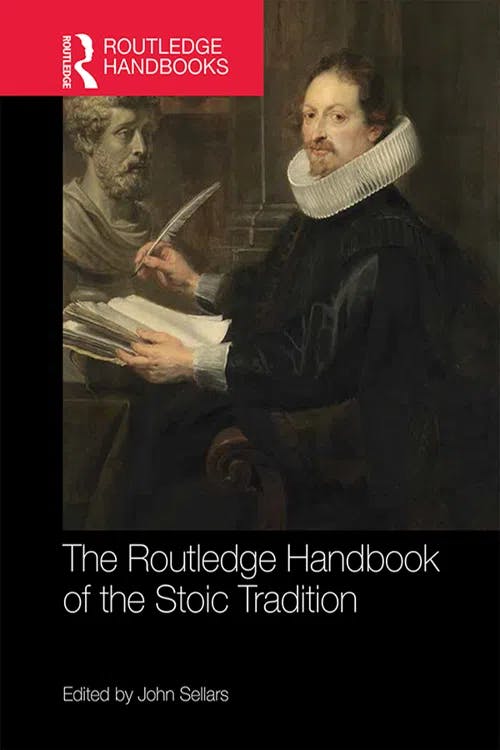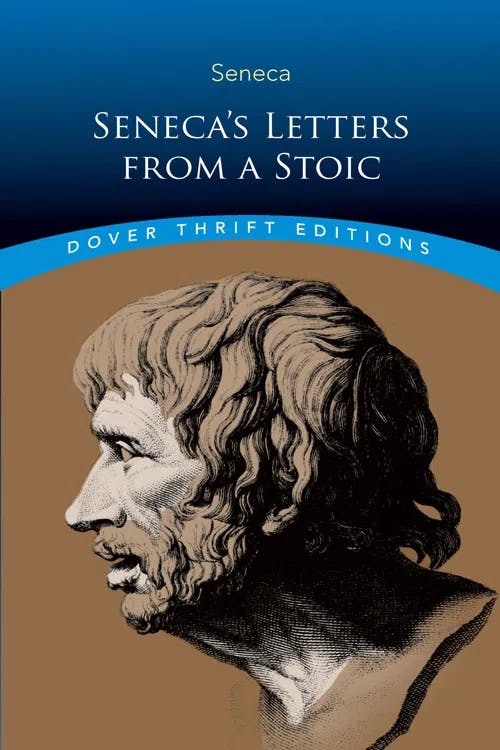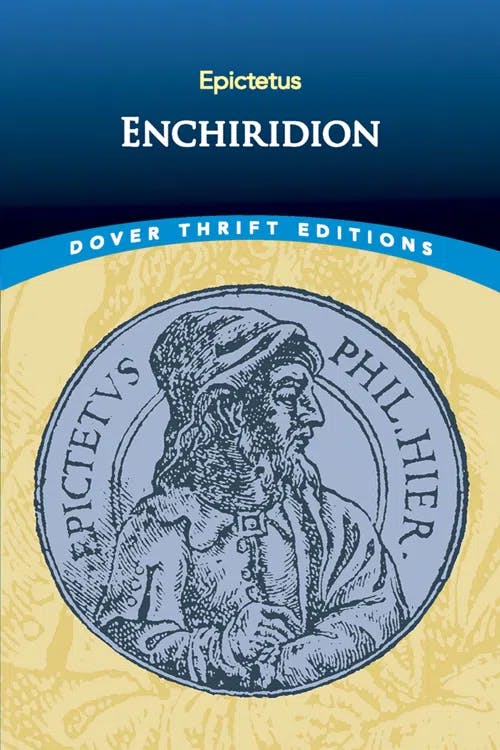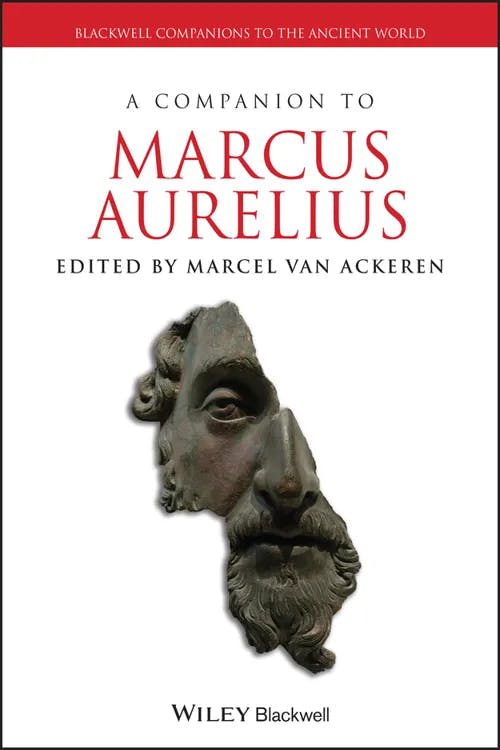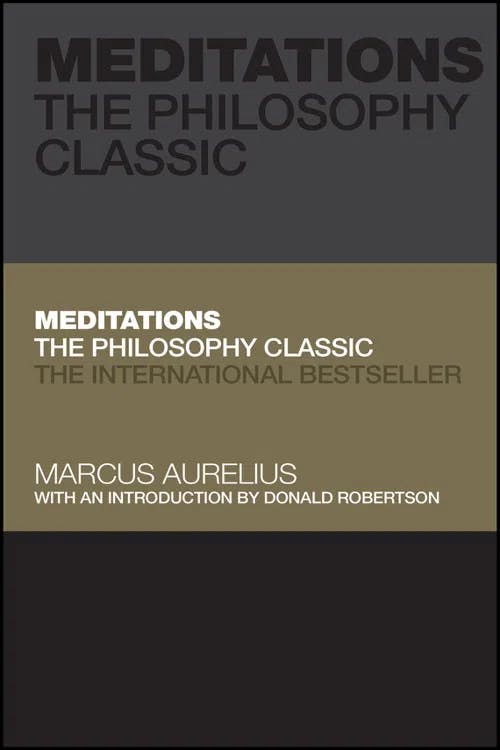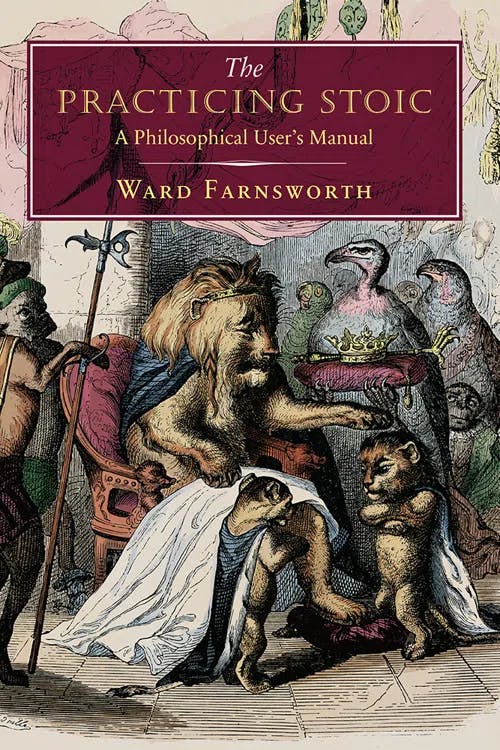What is Stoicism?
MA, English Literature (University College London)
Date Published: 21.06.2023,
Last Updated: 10.01.2024
Share this article
Defining Stoicism
It’s likely that you have heard someone described as “stoic” if they heroically endure pain, or stay calm in the face of misfortune. In this common usage, this is “stoicism” with a lowercase “s”. When Stoicism appears with a formal capital letter, though, it refers to the philosophical school — the conceptual basis from which we derive our general sense of what it means to be stoic, and the subject of this guide.
Our everyday sense of what it means to be “stoic,” divorced from its philosophical roots, is not entirely unfaithful to the underlying philosophy of Stoicism. Although there is variation between the ideas of different Stoic philosophers, Stoicism in general aims to help people minimize negative emotions, endure hardship, and live good lives.
The School of Life’s Great Thinkers (2020) provides a concise and approachable summary of Stoicism in its basic essence:
Stoicism was a philosophy that flourished for some 400 years in ancient Greece and Rome, gaining widespread support among all classes of society. It had one very large and highly practical ambition: to teach people how to be calm and brave in the face of overwhelming anxiety and pain.
The School of Life, edited by Alain de Botton
Stoicism was a philosophy that flourished for some 400 years in ancient Greece and Rome, gaining widespread support among all classes of society. It had one very large and highly practical ambition: to teach people how to be calm and brave in the face of overwhelming anxiety and pain.
Stoicism is a grounded philosophy centered on practical, everyday considerations: how do we live a good life, and deal with the negative aspects of existence which will inevitably arise? For the Stoics, the mind is key: by controlling our thoughts and emotions, we can control how we react to anything that may happen. A central principle of Stoicism is that we should only worry about what we can control. Rather than being anxious about what we cannot change, Stoicism advises us that it is better to focus our attention on what is actually within our power. It is unnecessary, unproductive, and actively damaging for our well-being to worry about anything else.
The Stoics extend this mindset to our very greatest worries, such as ill health and death. They advise us to practice a kind of radical acceptance of life’s worst aspects, and to keep in mind our insignificance from a cosmic perspective. As The School of Life continues, “Stoicism is nothing less than an elegant, intelligent dress rehearsal for catastrophe”:
Rather than appease ourselves with sunny tales, it is far better – the Stoics proposed – to courageously come to terms with the very worst possibilities – and then make ourselves entirely at home with them. (2020)
This may be easier said than done, of course, but the Stoics were adamant that this kind of mental discipline was the key to a calm and happy life.
In Stoicism (2014), John Sellars unpacks Stoicism’s main philosophical features in more detail:
the Stoics proposed a materialist ontology in which God permeates the entire cosmos as a material force. They claimed that virtue alone is sufficient for happiness and that external goods and circumstances are irrelevant (or at least nowhere near as important as most people tend to assume). They argued that our emotions are merely the product of mistaken judgements and can be eradicated by a form of cognitive psychotherapy. They brought these various doctrines together in the image of the ideal Stoic sage who would be perfectly rational, emotionless, indifferent to his or her circumstances and, infamously, happy even when being tortured on the rack.
John Sellars
the Stoics proposed a materialist ontology in which God permeates the entire cosmos as a material force. They claimed that virtue alone is sufficient for happiness and that external goods and circumstances are irrelevant (or at least nowhere near as important as most people tend to assume). They argued that our emotions are merely the product of mistaken judgements and can be eradicated by a form of cognitive psychotherapy. They brought these various doctrines together in the image of the ideal Stoic sage who would be perfectly rational, emotionless, indifferent to his or her circumstances and, infamously, happy even when being tortured on the rack.
For the Stoics, God exists in our material world, and virtue is seen as the highest good and the key to eudaimonia (happiness, flourishing). As Sellars points out, Stoicism does exhibit “complex philosophical theories in ontology (theory of what exists), epistemology (theory of knowledge) and ethics,” but its main focus always returns to how we should live our everyday lives calmly and rationally.
Now that we have a clearer sense of Stoicism, let’s unpack it in more detail and take a look at its most significant philosophers.
Stoicism: the key thinkers
The history of Stoicism is rich and complex, with a range of philosophers from different centuries and countries all contributing to our ideas of what “Stoicism” is today. In the following section, we will introduce some of the most influential contributors to Stoic thought.
The first Stoics
Strangely enough, the word “stoic” itself is originally derived from the Stoa Poikile (or “painted porch”) in the Ancient Agora of Athens, where Zeno of Citium (c. 334–c. 262 BCE) and his followers first gathered to discuss their philosophy.
Zeno may have founded the school of Stoic philosophy, but his ideas did not develop in a vacuum. Many webs of influence can be traced between Zeno’s ideas and those which preceded him — with Socrates and the teachings of Plato’s Academy inevitably looming large, along with the Cynic school of philosophy.
Even at this early stage, Stoicism was not limited to Athens. As John Sellars explains in The Routledge Handbook of the Stoic Tradition,
Although originally associated with the Painted Stoa in Athens, even in the Hellenistic period we find Stoics active in other parts of the ancient Mediterranean world, most notably Posidonius at Rhodes and Athenodorus in Pergamum. Even in the Hellenistic period, then, Stoicism was a rich and diverse movement, a living tradition as complex as its reception in the periods since antiquity [...] (2016)
Edited by John Sellars
Although originally associated with the Painted Stoa in Athens, even in the Hellenistic period we find Stoics active in other parts of the ancient Mediterranean world, most notably Posidonius at Rhodes and Athenodorus in Pergamum. Even in the Hellenistic period, then, Stoicism was a rich and diverse movement, a living tradition as complex as its reception in the periods since antiquity [...] (2016)
Other influential Stoic philosophers from this early period include Chrysippus of Soli (c. 280–c. 206 BCE), who substantially built upon Zeno’s existing principles. Sellars argues that
He is probably the most important of the early Stoics and arguably the most important Stoic philosopher of all. His most significant contribution to the development of Stoicism lay in bringing together the ideas of his predecessors, adding his own original material and setting out a highly systematic philosophical system that would become the basis for a Stoic orthodoxy. (2014)
The writings of Zeno, Chrysippus, and other early Stoics (such as Cleanthes and Hecato) have been lost to the mists of history, and so all we know of them today are from the works of other writers. The Lives and Opinions of Eminent Philosophers (c. third century BCE) by Diogenes Laërtius is a substantial source, and his sections on The Stoic Philosophers (2017) can be found in one convenient volume on Perlego. It is from Laërtius, for example, that we find key thoughts from the early Stoics on the primacy of acting in accord with nature:
This is why Zeno was the first (in his treatise On the Nature of Man) to designate as the end "life in agreement with nature" (or living agreeably to nature), which is the same as a virtuous life, virtue being the goal towards which nature guides us. So too Cleanthes in his treatise On Pleasure, as also Posidonius, and Hecato in his work On Ends. Again, living virtuously is equivalent to living in accordance with experience of the actual course of nature, as Chrysippus says in the first book of his De finibus; for our individual natures are parts of the nature of the whole universe. (c. third century BCE [2017])
Diogenes Laërtius
This is why Zeno was the first (in his treatise On the Nature of Man) to designate as the end "life in agreement with nature" (or living agreeably to nature), which is the same as a virtuous life, virtue being the goal towards which nature guides us. So too Cleanthes in his treatise On Pleasure, as also Posidonius, and Hecato in his work On Ends. Again, living virtuously is equivalent to living in accordance with experience of the actual course of nature, as Chrysippus says in the first book of his De finibus; for our individual natures are parts of the nature of the whole universe. (c. third century BCE [2017])
Living a virtuous life in agreement with nature is just one key tenet of Stoic thought which can be traced back to the very first Stoics. We will turn now, however, to the most influential figures of Roman Stoicism.
Seneca the Younger
Seneca the Younger (c. 4 BCE–65 CE) lived a varied life as a philosopher, dramatist, and advisor to the tyrannical Emperor Nero. Seneca’s Letters from a Stoic (c. 62–64 CE [2016]) is one of the most influential works of Stoic philosophy, and it remains popular to this day as a relatable and practical guide for dealing with life’s challenges. Seneca deals with a variety of subjects in his letters (addressed to his friend, Lucilius), but the Stoic emphasis on the importance of a calm and clear mentality is evident throughout. Here, for example, we find a classic expression of Stoic fortitude and mental discipline:
[L]et the mind be disciplined to understand and to endure its own lot, and let it have the knowledge that there is nothing which Fortune does not dare [...]. We must not cry out at any of these calamities. Into such a world have we entered, and under such laws do we live. (c. 62–64 CE [2016])
Seneca
[L]et the mind be disciplined to understand and to endure its own lot, and let it have the knowledge that there is nothing which Fortune does not dare [...]. We must not cry out at any of these calamities. Into such a world have we entered, and under such laws do we live. (c. 62–64 CE [2016])
Rather than rail in vain against the fundamental nature of reality, Seneca advises us to accept it and live as calmly as we can in the present: “memory recalls the tortures of fear, while foresight anticipates them. The present alone can make no man wretched” (c. 62–64 CE [2016]). Even though life may be full of horrors, Seneca tells us that we “suffer more often in imagination than in reality,” and that the best way of dispelling worry is to “assume that what you fear may happen will certainly happen in any event” (c. 62–64 CE [2016]). Through this kind of radical acceptance, Seneca argues, we can find peace.
Epictetus
As a former slave, Epictetus (c. 50–c. 135 CE) had the kind of life which would have sorely tested his Stoic teachings. He became an influential teacher of philosophy in Rome after gaining his freedom, and what we know of his lectures comes to us in the form of transcriptions from his student Arrian. With his teachings compiled into Discourses (c. 108 CE [2012]) and Enchiridion (c. 125 CE [2012]), the Stoicism advocated by Epictetus has had a huge impact (notably on Marcus Aurelius, who we discuss in the next section).
The Enchiridion begins with one of Stoicism’s key concepts: the importance of making a distinction between what we have the power to change, and what we do not. Epictetus writes,
Of things some are in our power, and others are not. In our power are opinion, movement toward a thing, desire, aversion (turning from a thing); and in a word, whatever are our own acts: not in our power are the body, property, reputation, offices (magisterial power), and in a word, whatever are not our own acts. (c. 125 CE [2012])
Epictetus
Of things some are in our power, and others are not. In our power are opinion, movement toward a thing, desire, aversion (turning from a thing); and in a word, whatever are our own acts: not in our power are the body, property, reputation, offices (magisterial power), and in a word, whatever are not our own acts. (c. 125 CE [2012])
Once we have determined whether something lies within our power, we are then able to think and act accordingly. Epictetus tells us that “if it relates to anything which is not in our power, be ready to say, that it does not concern you” (c. 125 CE [2012]).
Sellars argues that this key concept “perfectly captures the essence of Epictetus' philosophy as we know it” (2014):
Almost all human misery, he argues, is the product of people [...] assuming that they have control of things that in fact they do not, of grounding their happiness on external things "not up to us" and so making it highly vulnerable to the vicissitudes of fortune. (2014)
Marcus Aurelius
Marcus Aurelius (121–180 CE) is one of the most respected Roman emperors; often praised for his apparently wise, considered, and moral approach to leadership. His reputation as a philosopher, however, has arguably transcended the rest of his biography — with his Stoic reflections on life experiencing widespread popularity, particularly in recent years. As Marcel van Ackeren argues, part of Marcus Aurelius’ appeal lies in his fusion of imperial power with philosophical introspection:
Marcus’ reception and reputation does not rest on the two independent pillars of being an emperor and being a philosopher. It is their combination that intrigues, and has always intrigued. (2012)
Marcel van Ackeren
Marcus’ reception and reputation does not rest on the two independent pillars of being an emperor and being a philosopher. It is their combination that intrigues, and has always intrigued. (2012)
Gathered together in his Meditations (c. 161–180 CE [2019]), Marcus Aurelius’ musings were seemingly intended to be nothing more than a self-addressed record of his private thoughts, but they now stand as “one of the most widely read philosophical texts from antiquity” (van Ackeren, 2012). In his introduction to Meditations, Donald Robertson argues that it is “one of the most loved self-help and spiritual classics of all time”:
the central appeal of the book [...] is that it offers a way to “master care and pain” by providing philosophical insights that promise to elevate our minds above worldly concerns – both the things we crave and those we fear. (2019)
Marcus Aurelius
the central appeal of the book [...] is that it offers a way to “master care and pain” by providing philosophical insights that promise to elevate our minds above worldly concerns – both the things we crave and those we fear. (2019)
Together with the earlier Stoic texts we have discussed, the Meditations have arguably done the most to shape the Stoic mindset as we know it today. A central tenet of Stoicism, for example, is the idea that we are able to correct false or unhelpful beliefs in order to achieve emotional equilibrium — as Marcus Aurelius famously advises here:
If you are pained by any external thing, it is not this thing that disturbs you, but your own judgment about it. And it is in your power to wipe out this judgment now. (c. 161–180 CE [2019])
Memento mori — the practice of reminding ourselves of our own mortality — is similarly central to Stoicism. In the words of Marcus Aurelius,
Do not act as if you were going to live ten thousand years. Death hangs over you. While you live, while it is in your power, be good. (c. 161–180 CE [2019])
If you’d like to read about Marcus Aurelius in more depth, A Companion to Marcus Aurelius (edited by Marcel van Ackeren, 2012) and Marcus Aurelius (John Sellars, 2020) provide comprehensive coverage.
Stoicism, suffering, and emotion
One of the issues that has been raised about Stoicism is its attitude towards suffering and emotion in general. It may be possible to remain stoic in the face of some misfortunes, but it may be unrealistic (and a privileged viewpoint) to expect people dealing with more extreme levels of pain and misfortune to remain stoic — for example, those who deal with decades of chronic illness and disability. It is easy to advocate Stoicism when the pain is manageable, but not so easy if it remains intractable for years on end.
Is Stoicism too fatalistic and comfortable with the suffering of others? Does it tend to assume things are more out of our collective control than they actually are? Can complacency creep in if we merely accept the bad things that happen, without actively trying to change things for the better? Is repressing emotion really a good idea for our mental health?
This last point, Margaret Graver argues, is a misinterpretation of Stoicism. Graver admits, though, that it is easy to see why such an impression of emotionless Stoicism has emerged:
“Stoicism” in today’s English means “absence of emotion,” and this usage takes for granted that the Stoics of ancient Greece advocated an across-the-board suppression of feeling. It is no wonder, then, that people interested in the study of emotion have frequently regarded the ancient Stoics with suspicion, even hostility. Most of us believe, reasonably enough, that the capacity for emotions is an important and in any case an ineliminable part of being human. (2008)
Margaret Graver
“Stoicism” in today’s English means “absence of emotion,” and this usage takes for granted that the Stoics of ancient Greece advocated an across-the-board suppression of feeling. It is no wonder, then, that people interested in the study of emotion have frequently regarded the ancient Stoics with suspicion, even hostility. Most of us believe, reasonably enough, that the capacity for emotions is an important and in any case an ineliminable part of being human. (2008)
But the Stoics’ actual aim, Graver argues, is “not to eliminate feelings as such from human life, but to understand what sorts of affective responses a person would have who was free of false belief” (2008). In other words, this interpretation holds that the Stoics want to identify and eliminate unnecessary feelings, along with their harmful effects on us.
Along similar lines, Ward Farnsworth argues that
This is all a misunderstanding. The Stoics do not condemn feeling. In important ways they endorse it. Stoics value compassion, detest indolence, and are committed to service to mankind [...]. But the Stoic would unhook these commitments from inner distress over any given case. For why stop with that case? There is cause for such distress in every direction, and meanwhile it distracts from the big picture and from anything constructive one might do about it. (2018)
Ward Farnsworth
This is all a misunderstanding. The Stoics do not condemn feeling. In important ways they endorse it. Stoics value compassion, detest indolence, and are committed to service to mankind [...]. But the Stoic would unhook these commitments from inner distress over any given case. For why stop with that case? There is cause for such distress in every direction, and meanwhile it distracts from the big picture and from anything constructive one might do about it. (2018)
Farnsworth argues that Stoics would separate feeling from emotion — they would have compassion for a grieving family, for example, but they would not feel an unreasonable amount of emotion. The Stoic mindset, Farnsworth argues, is composed in such a way that it resembles a greater degree of lived experience than the Stoic might actually have. They would contemplate events with the long understanding, and perspective, of having experienced thousands of other similar events — like an experienced doctor comforting one of their many patients (Farnsworth, 2018). Critics of Stoicism, of course, might still argue that such a response lacks compassion and constitutes an unrealistic denial of human feeling. We may be calmer if we are unaffected automatons, but is this a realistic or even desirable state of affairs? As we will explore in the next section, such concerns have not held back Stoicism’s influence on the modern self-help industry and even psychotherapy.
Stoicism: a philosophy for the twenty-first century?
Stoicism has had a rich legacy, with its influence stretching across the centuries. It still has many strong advocates today, and it has recently experienced an upsurge in popularity. Author Ryan Holiday, for example, has experienced great success with his books on Stoicism and the wider The Daily Stoic brand. Stoicism has influenced the self-help sector and been praised for its usefulness in treating a range of modern ailments. The School of Life writes,
We still honour this school whenever we call someone ‘stoic’ or plain ‘philosophical’ when fate turns against them: when they lose their keys, are humiliated at work, rejected in love or disgraced in society. Of all philosophies, Stoicism remains perhaps the most immediately relevant and useful for our uncertain and panicky times. (2020)
Stoicism has even been credited as an influential precursor to such modern psychotherapies as Cognitive Behavioral Therapy (CBT) — both approaches emphasize the central role of cognition in controlling emotions and the importance of recognizing our thoughts as “just thoughts” which we can control our reactions to. As Donald Robertson writes in “The Stoic influence on modern psychotherapy,”
Albert Ellis, the founder of REBT [rational-emotive behavior therapy], and Aaron T. Beck, the founder of “cognitive therapy,” the most common version of CBT, both described Stoicism as the main philosophical inspiration for their respective psychotherapies. (2016)
Edited by John Sellars
Albert Ellis, the founder of REBT [rational-emotive behavior therapy], and Aaron T. Beck, the founder of “cognitive therapy,” the most common version of CBT, both described Stoicism as the main philosophical inspiration for their respective psychotherapies. (2016)
Robertson also outlines how
[T]he cognitive theory of emotions [...] is the aspect of ancient Stoicism that is most familiar to modern CBT practitioners, and which exerts the most explicit influence over their theory and practice. (2016)
Just as CBT is extensively employed to treat a range of mental health disorders, some modern philosophers are in favor of prescribing Stoicism as a preventive mental practice to help us cope with the challenges of life. Such mental discipline may be difficult to maintain, especially in the more extreme circumstances that life throws at us, but the Stoics argue that we must try.
Further reading on Perlego
- Roman Stoicism by Edward Vernon Arnold
- Philosophic Pride by Christopher Brooke
- A New Stoicism by Lawrence C. Becker
- The Art of Living by John Sellars
- Seneca by Christopher Star
- Introducing Greek Philosophy by Rosemary Wright
What is Stoicism in simple terms?
What is an example of Stoicism?
What is a Stoic?
Who are the key Stoic philosophers?
What are the best books on Stoicism?
Bibliography
Ackeren, M. van (ed.) (2012) A Companion to Marcus Aurelius. Wiley. Available at: https://www.perlego.com/book/1002709/a-companion-to-marcus-aurelius-pdf
Aurelius, M. (2019) Meditations. Wiley. Available at: https://www.perlego.com/book/1342933/meditations-the-philosophy-classic-pdf
Blackson, T. (2011) Ancient Greek Philosophy. Wiley. Available at: https://www.perlego.com/book/1013655/ancient-greek-philosophy-from-the-presocratics-to-the-hellenistic-philosophers-pdf
de Botton, A. (ed.) (2020) Great Thinkers. The School of Life. Available at: https://www.perlego.com/book/1637102/great-thinkers-simple-tools-from-sixty-great-thinkers-to-improve-your-life-today-pdf
Epictetus (2012) Enchiridion. Dover Publications. Available at: https://www.perlego.com/book/1444077/enchiridion-pdf
Epictetus (2012) Discourses (Books 1 and 2). Dover Publications. Available at: https://www.perlego.com/book/111046/discourses-books-1-and-2-pdf
Epictetus (2012) Discourses (Books 3 and 4). Dover Publications. Available at: https://www.perlego.com/book/111171/discourses-books-3-and-4-pdf
Durand, M., Shogry S., and Baltzly D. (2023) “Stoicism,” The Stanford Encyclopedia of Philosophy. Spring 2023 Edition. Available at: https://plato.stanford.edu/archives/spr2023/entries/stoicism/
Farnsworth, W. (2018) The Practicing Stoic. David R. Godine, Publisher. Available at: https://www.perlego.com/book/1384624/the-practicing-stoic-a-philosophical-users-manual-pdf
Graver, M. (2008) Stoicism and Emotion. The University of Chicago Press. Available at: https://www.perlego.com/book/1851635/stoicism-and-emotion-pdf
Holowchak, A. (2008) The Stoics: A Guide for the Perplexed. Bloomsbury Publishing. Available at: https://www.perlego.com/book/874963/the-stoics-a-guide-for-the-perplexed-pdf
Laertius, D. (2018) The Lives and Opinions of Eminent Philosophers. Perlego. Available at: https://www.perlego.com/book/1822954/the-lives-and-opinions-of-eminent-philosophers-pdf
Laërtius, D. (2017) The Stoic Philosophers. Klondike Classics. Available at: https://www.perlego.com/book/976882/the-stoic-philosophers-pdf
Robertson, D. (2018) Stoicism and the Art of Happiness. John Murray Press. Available at: https://www.perlego.com/book/3179242/stoicism-and-the-art-of-happiness-practical-wisdom-for-everyday-life-embrace-perseverance-strength-and-happiness-with-stoic-philosophy-pdf
Sellars, J. (ed.) (2016) The Routledge Handbook of the Stoic Tradition. Taylor and Francis. Available at: https://www.perlego.com/book/1561041/the-routledge-handbook-of-the-stoic-tradition
Sellars, J. (2014) Stoicism. Taylor and Francis. Available at: https://www.perlego.com/book/1559085/stoicism-pdf
Sellars, J. (2020) Marcus Aurelius. Taylor and Francis. Available at: https://www.perlego.com/book/1628770/marcus-aurelius-pdf
Seneca, L. A. (2016) Seneca’s Letters from a Stoic. Dover Publications. Available at: https://www.perlego.com/book/510358/senecas-letters-from-a-stoic-pdf
MA, English Literature (University College London)
Andy Cain has an MA in English Literature from University College London, and a BA in English and Creative Writing from Royal Holloway, University of London. His particular research interests include science fiction, fantasy, and the philosophy of art. For his MA dissertation, he explored the presence of the sublime in Shakespeare’s plays.



